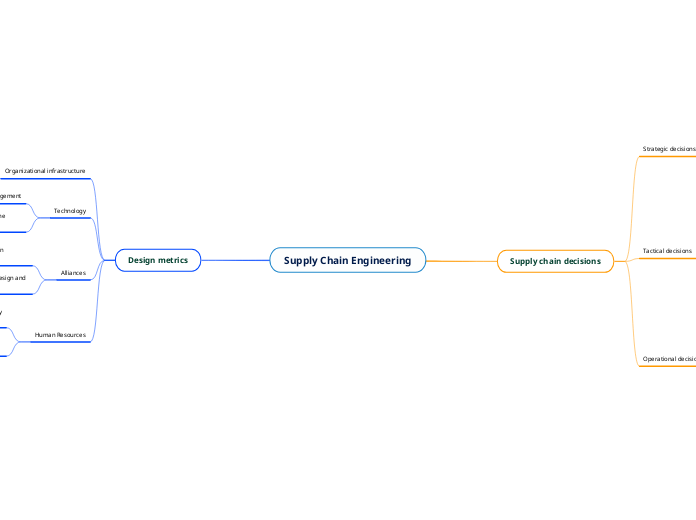Supply Chain Engineering
Supply chain decisions
Strategic decisions
Supply chain network design (location of plants, distribution centers, warehouses, etc.)
Production and supply (in-house manufacturing or subcontracting, choice of suppliers and partners)
Information technology (supply chain coordination through internal software or commercial packages)
Tactical decisions
Purchases (quantity and time of purchase)
Production planning (quantity and time of production)
Inventory management (balancing between replenishment costs and shortage risks)
Transportation (choice of shipping modes and frequency)
Distribution (coordination of the replacement of distribution centers with production)
Operational decisions
Vendor delivery scheduling
Setting customer order due dates
Daily or weekly production schedule
Allocation of limited supplies between backorders and demand from new customers
Design metrics
Organizational infrastructure
Collaboration and coordination between companies in the supply chain
Technology
Information technology for supply chain management
Manufacturing technology that enables efficiencies in the supply chain
Alliances
Strategic collaboration with suppliers and supply chain partners
Assumption of responsibility by the suppliers in the design and manufacture of the product
Human Resources
Technical employees with skills in analysis and design of supply chain networks
Managerial employees with conceptual understanding of key issues
